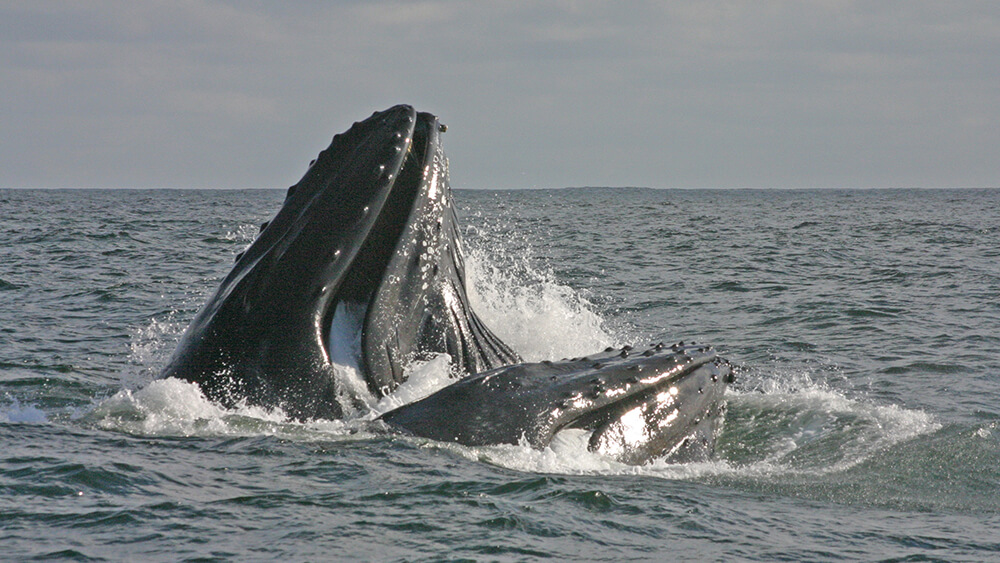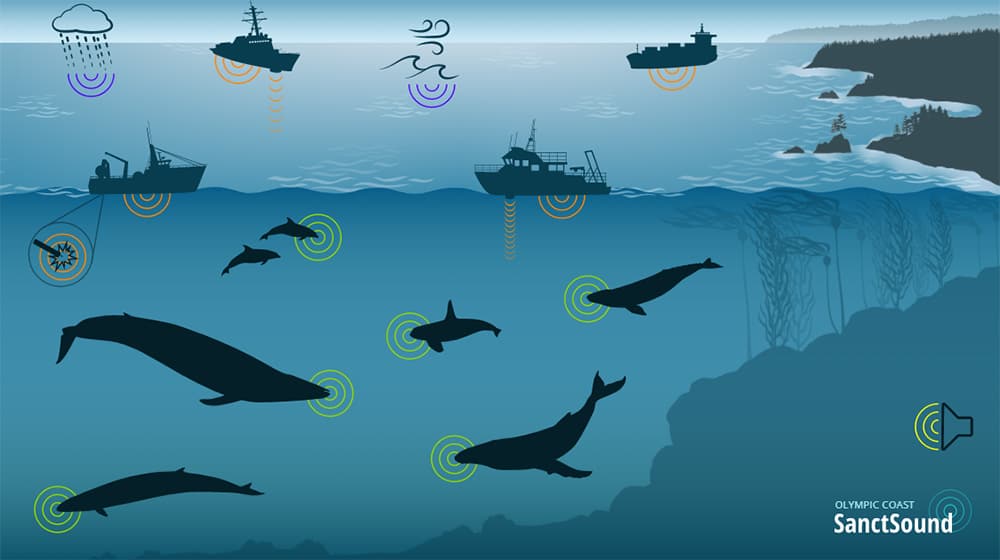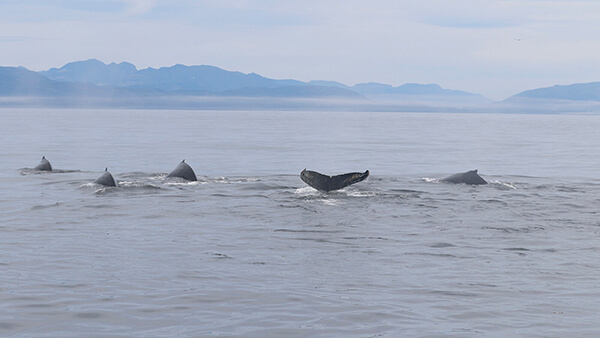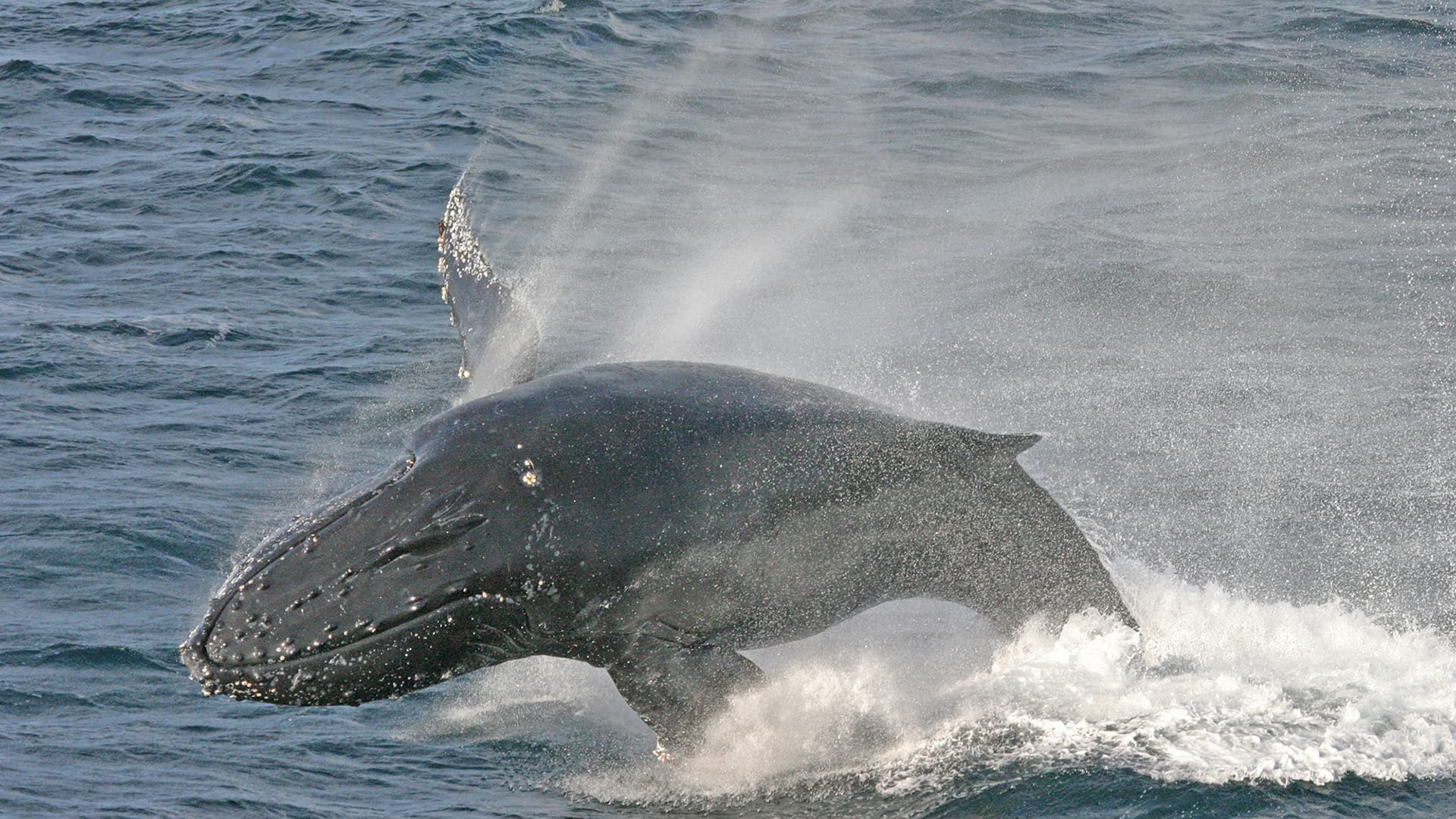Ocean Sound

Underwater sound is generated from ambient sources like rain, tides, crashing waves, and seismic activity, as well as from human sources such as vessel noise and man-made explosions. Recent research has documented differences in underwater ‘soundscapes’ within and among sanctuaries, thanks to monitoring at a network of Ocean Noise Reference Stations led by NOAA Pacific Marine Environmental Lab and a collaborative partnership between NOAA and the U.S. Navy known as SanctSound.

Explore underwater sound in Olympic Coast National Marine Sanctuary at IOOS.us.
NOAA, the U.S. Navy, and partners have launched a new web portal that allows users to learn about and listen to underwater sounds throughout the National Marine Sanctuary System.

Listening for Humpbacks in Olympic Coast National Marine Sanctuary
Learn about long-term acoustic monitoring by NOAA and the U.S. Navy within Olympic Coast National Marine Sanctuary and how it provides insights into the difference between natural variability in humpback whale presence or behavior, or when variability has been induced by a specific event or series of events.

Unraveling Mysteries of Humpback Whale Song at Olympic Coast National Marine Sanctuary
Scientists once thought that humpback song only occurs in breeding grounds, but the last 50 years of underwater recordings have revealed that humpback males also sing in their feeding grounds.

